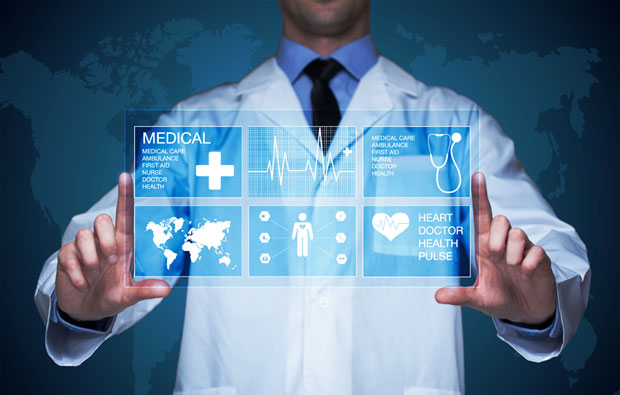Manufacturers are eager to lay the bricks and help pave the road to better, more personalized healthcare through integration of connected devices in the new Internet of Medical Things.
Compared to other industries, healthcare has been “inherently conservative and slow” to embrace innovations such as the cloud and the Internet of Things — but that’s changing. Innovative tech products and services are making it harder for healthcare providers to ignore the potential benefits of connected medical devices and the IoMT, according to Ian Shakil, CEO of Augmedix.
“We’re seeing this firsthand, as major healthcare systems — including Sutter Health, Dignity Health, CHI and TriHealth — scale Augmedix’s service across their organizations with a mission to rehumanize the doctor-patient relationship,” he told TechNewsWorld.
Little Gadgets and Big Data
People aged 65 and older made up about 14.7 percent of the United States population in 2014, and that figure could reach 20 percent, according to Administration on Aging projections.
Although the over-65 population will continue to drive up healthcare costs, new support for aging in place and efforts to shorten hospital stays could alleviate that strain. However, that’s dependent on device manufacturers and software developers getting the customer experience right for both patients and providers, suggested Virtual Health CEO Adam Sabloff.
The valuable data rendered from connected medical devices, “such as wearables that monitor blood pressure and other vitals, is relatively useless if never presented to a patient’s care team in an easy to read, actionable manner,” he told TechNewsWorld. “This is where innovative end-to-end solutions come into play.”
Virtual Health maintains a cloud-based platform that aggregates and integrates data from a range of sources and formats to give care teams “a 360-degree view of the patient.” That allows physicians to “intervene and provide proactive care before a condition manifests or worsens,” said Sabloff.
“Patients will truly benefit from the IoMT only when end-to-end solutions are fully leveraged to help clinicians access and act on valuable data provided by wearables and other remote monitoring tools,” he added.
Encouraging Adoption
Mobility and data management are key to the IoMT’s success, according to Keith Cooper, CEO of Constant Therapy.
“When medical care or therapy is untethered from a face-to-face office visit, patients can receive more and consistent care on any day in any place,” he told TechNewsWorld.
Constant Therapy’s tools for brain rehab offer users five times more speech and cognitive therapy than conventional approaches, the company’s internal studies concluded.
As for data and analytics, the company’s digitization of cognitive therapy delivery has made information about a patient’s strengths and deficits “instantly available and clearly understandable.”
Deeper insights and data tracking can lift the veil on understanding, Cooper said. Complementing that are interoperability and a compelling customer experience.
Interoperability to a large degree entails building in system support for all major mobile devices, and building products that are fresh and engaging, said Michelle de Haaff, vice president of marketing and customer success at Glooko.
“Freshness includes features that enable patients to share and get new insights from their data, get remote support from a care team, and even incentives that can keep them coming back for more,” de Haaff told TechNewsWorld.
Culture Change
To drive adoption of IoMT systems and to achieve more end-to-end solutions, hospital administrators, vendors and manufacturers must cooperate to lead healthcare through a culture change, said Joel Cook, senior healthcare solutions manager at Stanley Healthcare.
Remote consultations, social sensors, gadgets that offer guidance on health and wellness, analytics-driven regimens and other IoMT innovations are driving a cultural transformation that could move modern medicine into its next era.
“The keys to success are a clearly defined use case,” Cook told TechNewsWorld, “and goals that are agreed upon by all the stakeholders.”




















































I noticed that you have overlooked a major aspect of the healthcare solution adoption process. As more and more health tracker / prescription reminder apps become available, the essential recommendation for the patient in determining which app to adopt is their doctor, a fact which is not given the attention it needs.
To this end, I would like to introduce you to iMED Tracker, an intuitive app developed from the ground up to be very easy to use for tracking the user’s meds and prescription reminders. A 2-step syncing between the patient and their physician ensures that there is no miscommunication on prescribed medications, so that even less tech-savvy users can benefit from the app. Check it out at http://imedtracker.net